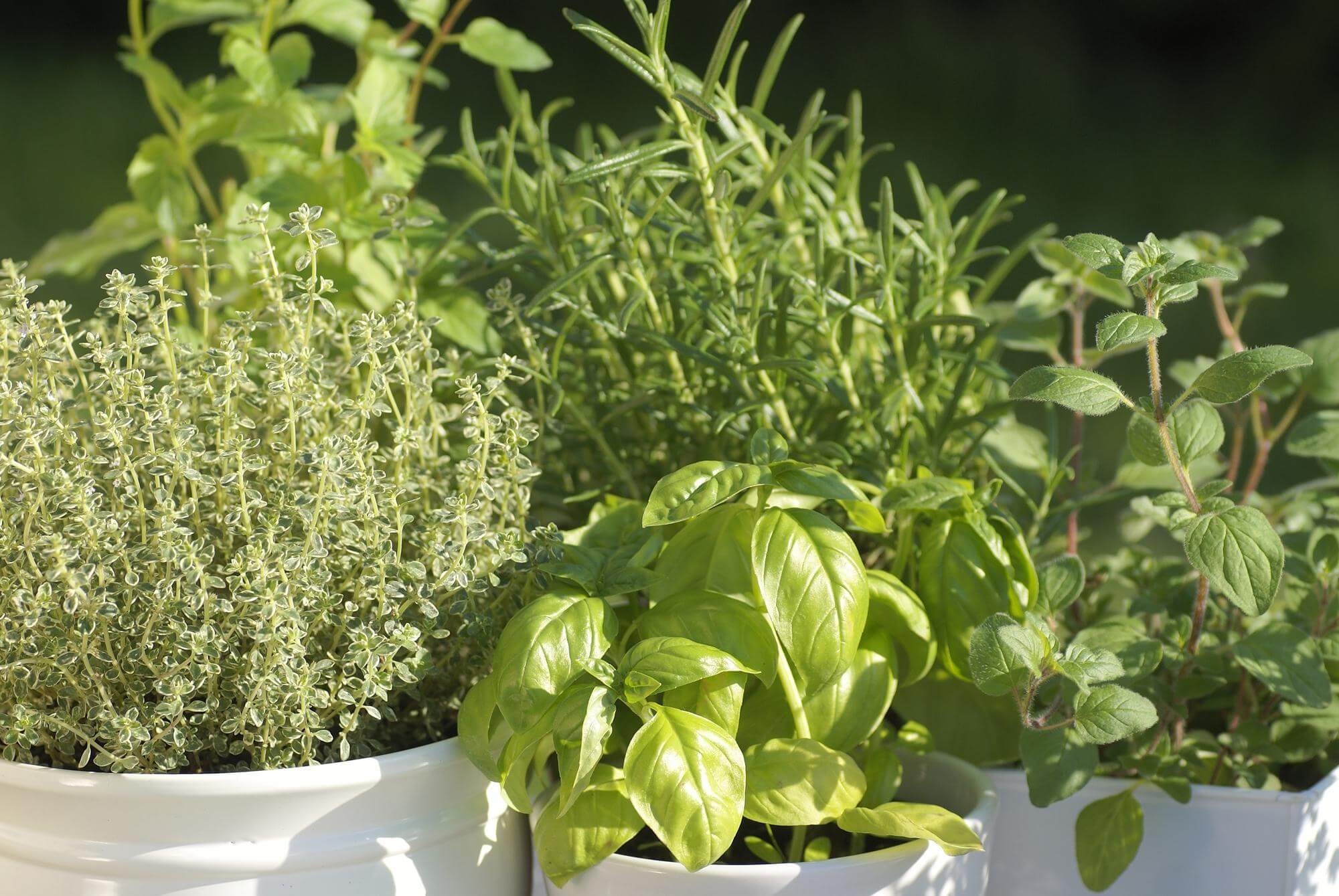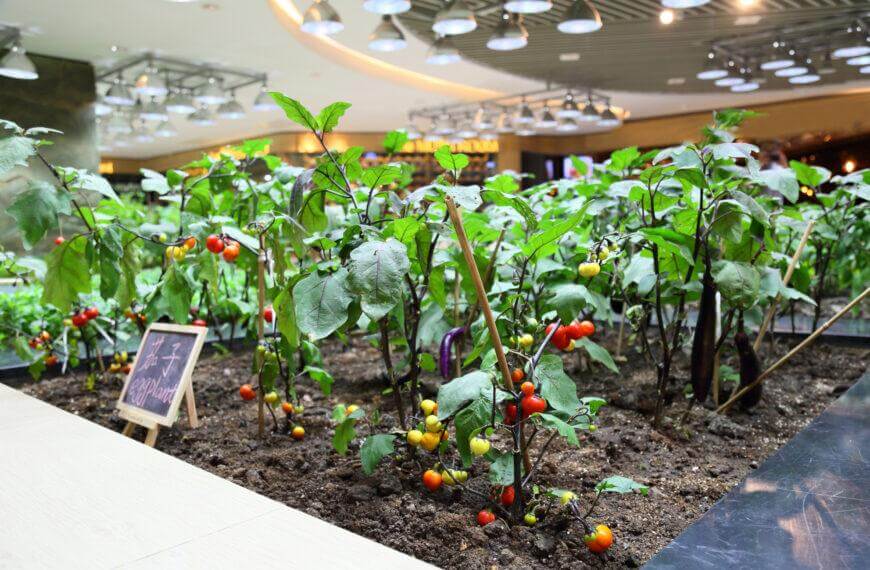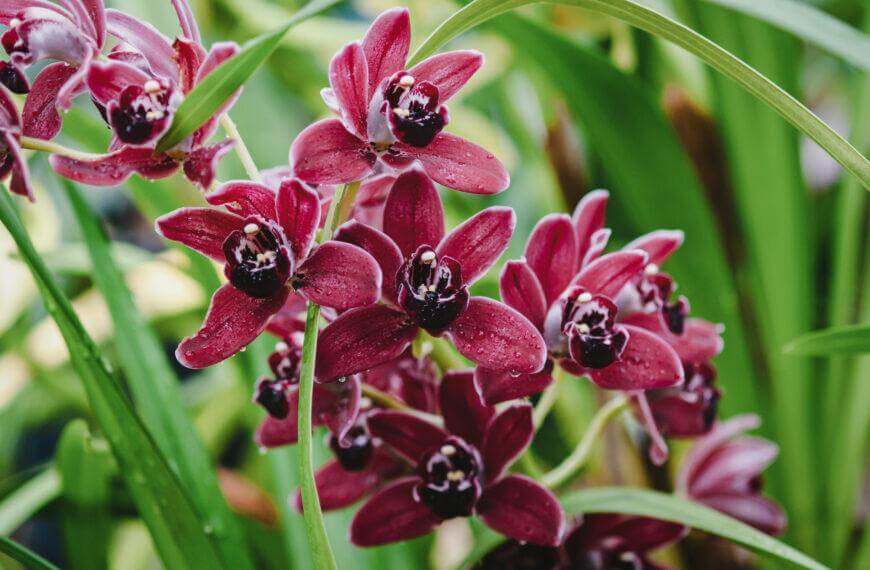Top 10 Culinary Herbs to Grow Indoors
To enhance your home-cooked meals with fresh flavors, grow your own culinary herbs indoors. The Top 10 Culinary Herbs to Grow Indoors section introduces you to the best herbs that won’t take up too much space. Included below are the names of the ten herbs, each with their own unique benefits and flavor profiles: Basil, Chives, Cilantro, Dill, Mint, Oregano, Parsley, Rosemary, Sage, and Thyme.
Basil
Growing Genovese basil is easy indoors and requires minimal maintenance. It has a sweet and slightly peppery taste, making it ideal for salads, pizzas, pastas, and more. Plus, it has anti-inflammatory, anti-bacterial, and anti-viral properties. Fascinatingly, its genus name Ocimum comes from the Greek word “okimon,” which means “smell.”
Chives are a great budget-friendly alternative to expensive seasoning. They look like green hair and taste like onions.
Chives
Chives, a kitchen staple, are super easy to grow indoors. Water them just once a week and you can harvest their leaves continuously. Plus, they are packed with vitamins A, C and K and have antibacterial properties.
Did you know that the lilac-colored blossoms can also be eaten? A great garnish for salads or soups. Grandma knew what she was doing when she grew chives in her kitchen window. Delicious taste and effortless cultivation – no wonder!
Cilantro, on the other hand, is an enigma – sometimes tasty, sometimes not!
Cilantro
This herb, known as coriander, is a favorite for foodies and chefs. It has a citrusy, sweet flavor and is used in many cuisines. It is packed with vitamins and minerals, plus antioxidants that stop cell damage. To grow cilantro indoors, you need sunlight and soil with good drainage.
Cilantro is used in salsas and salads. But, it can also top grilled meats or roasted veggies. Here’s a fun fact – not everyone can enjoy its flavor. Some may taste a soapy flavor due to their genes.
I once had a guest who couldn’t stand cilantro. Even a tiny bit was noticed. This made me understand how important it is to make dishes to suit each guest’s tastes. Some even think that cilantro tastes like soap!
Growing dill indoors is like having a mini herb garden – without the need for overalls or talking to plants.
Dill
This fragrant herb is renowned for its delicate leaves. It has a mild, sweet taste making it the perfect addition to salads, dressings, dips and seafood dishes!
Growing dill indoors is simple and can be done all year round. Give it a bright place with well-draining soil. Moisten it once or twice a week.
Dill offers impressive health benefits too. It’s jam-packed with antioxidants, essential oils and vitamins. These nutrients improve digestion, reduce inflammation and enhance the immune system.
Start growing your own dill today, so you always have it on hand!
Mint
Mint – it’s one of the most popular herbs for indoor gardeners. It has a great aroma and flavour, plus it pairs well with a variety of dishes – sweet and savoury, beverages, sauces, and desserts. Plus, it has medicinal benefits: aiding digestion, relieving headaches and nausea.
This herb is so easy to grow – it thrives in full or partial sun, and moist soil. Plus, it grows quickly, so you can have fresh leaves to harvest year-round. This means organic and pesticide-free herbs when you need them.
However, growing mint indoors can get tricky. It tends to spread quickly, so you should limit planting multiple seeds in one container, or opt for slower-growing varieties like spearmint or peppermint.
Here’s an interesting tip: adding fresh mint leaves to your water bottle can help you cut down on soda. It provides a natural flavour-infused alternative without the calories. Yum!
Oregano
Growing Oregano indoors? It’ll need soil with good drainage and at least 6 to 8 hours of sunlight. Its leaves are green, slightly hairy, and have a strong flavor that intensifies when dried. Oregano pairs well with tomato-based dishes, grilled chicken or fish, roasted vegetables, pasta sauces, and pizza. Plus, it has medicinal properties too; like anti-inflammatory and antioxidant effects that help with respiratory disorders.
Harvest Oregano once it’s around 4 inches tall. Prune it regularly to keep it bushy and encourage new growth. Don’t miss out on adding this herb to your indoor garden. It adds flavour to food and offers health benefits due to its essential oils!
Parsley
Parsley – a must-have in any indoor herb garden! It’s part of the Apiaceae family and grows up to 1 foot tall. Its vibrant green leaves have serrated, curly or flat edges. Perfect for salads, soups, stews, and sauces!
Simple to grow indoors – pick a sunny spot near a south-facing window or under a grow light. Ensure the soil is well-draining and moist but not waterlogged. Pinch back new growth to keep it bushy and prevent legginess.
Benefits? It’s packed with vitamins A, C, K and folate, plus antioxidants and flavonoids. These help support immune function, reduce inflammation and protect against diseases.
Pro Tip: Cut stems from the outside of the plant first. This will keep the plant growing and lasting longer!
Rosemary
This herb, with needle-like leaves and a woody stem, is a popular one. It’s easy to grow indoors and has a pungent and robust flavor. This makes it versatile in Mediterranean, Middle Eastern and American cuisine. Plus, it has medicinal properties for treating headaches, helping circulation and aiding digestion. Plus, it provides ornamental value with its small purple flowers.
Rosemary loves sunny spots with well-draining soil. But, if it can’t get that, it can manage with occasional direct sunlight. It needs moderate watering levels to stay healthy. This hardy perennial can be propagated from cuttings and can be harvested when its stems are 4-6 inches long.
Fun fact: Ancient Greeks believed rosemary improved memory and used it as a symbol of fidelity. So, if you want to be wise and make your indoor garden look better and your dinner tastier, grow some sage!
Sage
Sage, renowned as “the Savior” for its strong flavor, is highly popular. Its perennial nature makes it perfect to grow indoors. Meat dishes and veggies love its aromatic leaves! Plus, it has anti-inflammatory properties and high antioxidants – great for medicinal use. Sage also improves cognitive function and memory formation.
Thyme, though small, is big on flavor! Plus, it’s a great reminder that time flies when you’re having fun growing your own herbs indoors.
Thyme
Thyme, an essential French herb, has been a top choice for growing indoors. It has small leaves and a bold, earthy flavor that adds something special to soups, stews, and sauces. There are many varieties, so you can choose one with the flavor and benefits you want.
The following table contains all the info you need to know about growing thyme indoors:
| Aspect | Requirements |
|---|---|
| Soil | Well-draining soil mix |
| Lighting | Full sunlight or 6-8 hours |
| Watering | Wait until soil dries out |
| Temperature | 60°F – 80°F (15°C – 27°C) |
| Harvest Time | Late spring or early fall |
| Common Varieties | Lemon Thyme, English Thyme |
| Benefits | Anti-inflammatory properties |
Thyme is also said to have a calming fragrance that can act as a natural air freshener and bring longevity. According to mythology, it was favored by Aphrodite and was thought to give soldiers courage in battle. During the Middle Ages, it was even used to treat respiratory illnesses. Add some thyme to your life and meals – no one likes bland food!
Enhancing Your Home-Cooked Meals
To enhance your home-cooked meals with a touch of freshness and flavor, growing culinary herbs indoors is an excellent solution. Benefits of using fresh herbs and techniques for using them in cooking are explained in this section. Delve into this section to learn the unique benefits of using fresh herbs and ways to incorporate them into your cooking.
Benefits of using fresh herbs
Herbs and their freshness are a must for cooking. Here’s why using fresh herbs will make your home-cooked food better:
- Enhances smell and taste.
- Increases the nutritional value of food.
- Cuts down on preservatives and salt, keeping the food fresh for longer.
- Has medicinal properties that help keep us healthy.
It’s worth remembering that not all herbs are the same. Their strength varies, so you need to know which herb goes best with your recipe. Ancient Egyptians used herbs and spices in their day-to-day life too, both for cooking and medicinal purposes.
Fresh herbs are like the stealth bombers of the culinary world, adding flavor to your meals without you noticing.
Techniques for using fresh herbs in cooking
Fresh Herbs: Up Your Home-Cooked Meals!
Fresh herbs make your home-cooked meals taste and smell great. Here are four techniques to use them:
- Add at the end of cooking to keep freshness and aroma.
- Infuse oils, vinegar, or butter with herbs before using.
- Make rubs by combining herbs, salt, pepper, olive oil for flavoring meat.
- Experiment with herbal teas instead of water for cooking rice or quinoa.
Grow a small herb garden in your kitchen or backyard for a ready supply of fresh herbs.
Pro Tip: Wrap herbs in a damp paper towel, then in a plastic bag before storing in the fridge. This will help them stay fresh longer.
Frequently Asked Questions
Q: What are the top 10 culinary herbs to grow indoors?
A: The top 10 culinary herbs to grow indoors are basil, thyme, rosemary, chives, mint, parsley, cilantro, oregano, sage, and bay leaves.
Q: How can I grow these herbs indoors?
A: You can grow these herbs indoors by using pots or containers that have drainage holes, filling them with a good quality potting soil and placing them in a well-lit area.
Q: Can I grow these herbs in a small apartment?
A: Yes, you can grow these herbs in a small apartment as long as you have a windowsill or a balcony that gets plenty of natural light.
Q: Is it easy to care for these herbs?
A: Yes, it is easy to care for these herbs as long as you keep them well-watered and make sure they receive sufficient sunlight.
Q: How can I use these herbs to enhance my home-cooked meals?
A: You can use these herbs to enhance your home-cooked meals by adding them to your dishes either during cooking or as a garnish.




